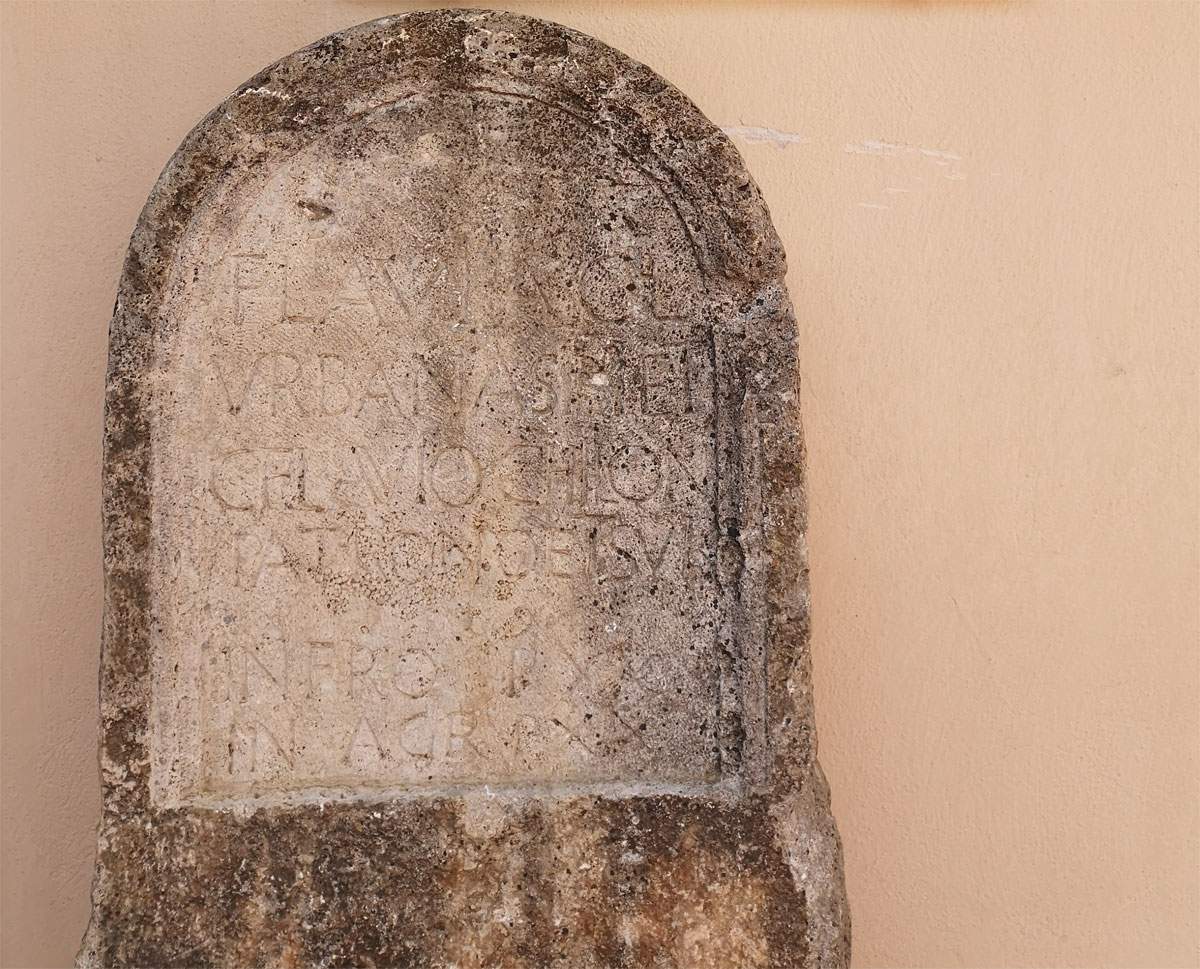Marcellina (Rome), discovery of important Roman funerary stele of a freedwoman, Flavia Urbana
An important Roman funerary stele from the first century AD, belonging to a deceased, the freedwoman Flavia Urbana, has been found in Marcellina (Rome). This is a significant discovery for the area.
In the municipality of Marcellina, near Guidonia Montecelio, a few kilometers from Rome, an important centered travertine funerary stele from the Roman period (1st century AD), with an engraved inscription, was found on September 10 in private land in the Caolini locality. The stele was analyzed by Zaccaria Mari, an official of the Soprintendenza Archeologia, Belle Arti e Paesaggio for the metropolitan area of Rome, the province of Viterbo and Southern Etruria, and Manuel Vanni, an archaeologist and member of the technical-scientific committee of theMunicipal Antiquarium, who verified its archaeological value once he arrived at the site following a report made by the landowner himself.
The stele, 169 cm high, 68 cm wide and with a maximum thickness of 23 cm, has an epigraphic mirror worked in the form of a step and outlined, except at the bottom, by an inverted throat and lath frame. The epigraphic text names the deceased, the freedwoman Flavia Urbana, who made the tomb for herself, for the patron C. Flavius Chilon and her family members, reporting the dimensions of the burial area: “Flavia C(ai) l(iberta) / Urbana sibi et / C(aio) Flavius Chiloni / patrono et suis / In fro(nte) p(edes) XX / In agr(o) p(edes) XX.” This is an unpublished find in a good state of preservation (except for some gaps in the support, which, however, do not affect its legibility) that adds new data to the knowledge of ancient onomastics in the area and reveals the presence of a previously unknown burial site. The find was transferred to the local Municipal Antiquarium, where numerous state-owned artifacts from the municipal area of Marcellina and its surroundings are already displayed and stored.
“The recently found stele,” explains Zaccaria Mari, "opens a window on the rural peopling of the territory of Marcellina in the Roman age, in that the dedicatee Flavia Urbana was almost certainly a slave employed in domestic work or in the agricultural fund of one of the villae rusticae that, beginning in the second century B.C., sprang up numerous in the area. Her condition of freedom, following enfranchisement by the former dominus, now patron, whose name she assumed, enabled her to dispose of a sum sufficient to build, on the fund itself, a tomb measuring 6 by 6 meters, arranged on the road-front, of which it will be interesting in the future to search for the remains. Therefore, for the cognitive data it delivers to us, the find significantly enriches the collections of the small Antiquarium, of which the Superintendence is committed, together with the Municipal Administration, to support the increase and enhancement in the future."
“The recovery of the stele is important news,” says Marcellina Mayor Alessandro Lundini, “and further evidence of the richness of our territory and its history. In recent years, thanks also to the opening of the Municipal Antiquarium with the support of the Superintendence, as a municipal administration we have wanted to boost the enhancement and protection of local heritage. Today precisely the Antiquarium is a site that has acquired its own relevance not only from a historical-cultural point of view, but also as a reference for local cultural programming, thanks to the commitment and activism of the Roman Archaeological Group, other associations, such as the Pro Loco, and the activation of the Universal Civil Service project.”
 |
| Marcellina (Rome), discovery of important Roman funerary stele of a freedwoman, Flavia Urbana |
Warning: the translation into English of the original Italian article was created using automatic tools. We undertake to review all articles, but we do not guarantee the total absence of inaccuracies in the translation due to the program. You can find the original by clicking on the ITA button. If you find any mistake,please contact us.




























